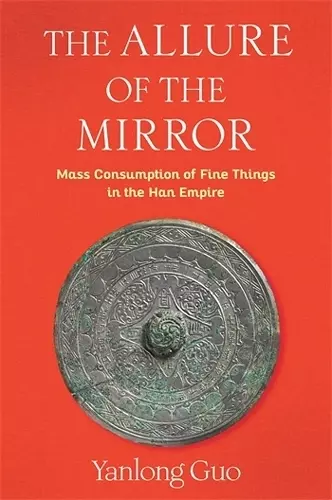The Allure of the Mirror
Mass Consumption of Fine Things in the Han Empire
Format:Hardback
Publisher:Columbia University Press
Published:18th Nov '25
Should be back in stock very soon

In Han China (202 BCE–220 CE), few luxury objects were as widely coveted as bronze mirrors. Typically circular and ranging from seven to thirty centimeters in diameter, these mirrors were crafted from high-tin bronze, with highly reflective surfaces on the front and intricate designs and auspicious inscriptions on the reverse.
The Allure of the Mirror explores how and why these objects, historically known as haowu (“fine things”), became so beloved throughout early imperial China. Tracing their production and consumption—from manufacture in imperial, princely, and private workshops to their roles in life and death—Yanlong Guo uncovers the varied ways these seemingly trivial objects took on social and cultural significance. Across social classes, mirrors had a wide range of uses as status symbols, personal tools, romantic tokens, family heirlooms, auspicious amulets, treasured gifts, and funeral offerings. Guo demonstrates how these “fine things,” once exclusive to elites, gradually became accessible to a wider segment of society. Mirrors, he argues, connected people across the empire, fostering a shared cultural community of aesthetic tastes and social values from royal courts to rural households.
Interdisciplinary and comprehensive, The Allure of the Mirror offers fresh insights into the relationship among art, society, and ideology in the Han Empire, revealing how decorative objects could bridge social divides and shape cultural identity.
From mine to marketplace to tomb, early Chinese bronze mirrors let us glimpse the aesthetic, economic, sociological, religious, and even philosophical discourses of their users; surviving by the thousands, they collectively form a robust database for exploring material and cultural values from two millennia ago. Yanlong Guo marshals hundreds of archeological reports, primary sources, and secondary studies to adeptly contextualize the early bronze mirror and here gives us its most thorough treatment to date. It will endure just as the mirror has. -- K. E. Brashier, Thomas Lamb Eliot Professor of Religion and Humanities, Emeritus, Reed College
Yanlong Guo's The Allure of the Mirror is a comprehensive and well-balanced study of the most popular art object from early China. Previous scholarship on Chinese bronzes, including mirrors, has focused on “mass production,” but this book turns the table by focusing on “mass consumption.” Guo wisely uses transmitted texts, inscriptional materials, and art historical observation to examine the physical, social, economic, and semiotic entanglements between mirrors and their users in the Han empire. It is an invaluable contribution to the field of early Chinese art. -- Guolong Lai, professor of the humanities, Westlake University, Hangzhou
The Allure of the Mirror is a milestone in the study of the art of early imperial China. With encyclopedic command and razor-sharp insight, Guo examines the Han bronze mirror as a metallurgical artifact, an optical device, and a prism through which the full sweep of Han civilization—its politics, commerce, technology, and metaphysics—comes into view. His rigorous yet imaginative approach fuses classical textual analysis with cutting-edge material science, revealing the mirror as both an art object and an epistemological medium. Few have tackled this subject with such depth and dexterity; after this, no one likely will for some time. This definitive work will stand as the final word on Han mirrors for generations. -- Eugene Y. Wang, Abby Aldrich Rockefeller Professor of Asian Art, Harvard University
ISBN: 9780231217781
Dimensions: unknown
Weight: unknown
376 pages